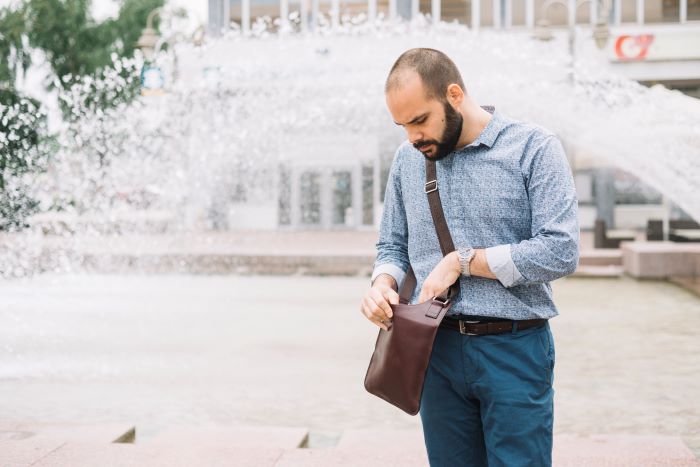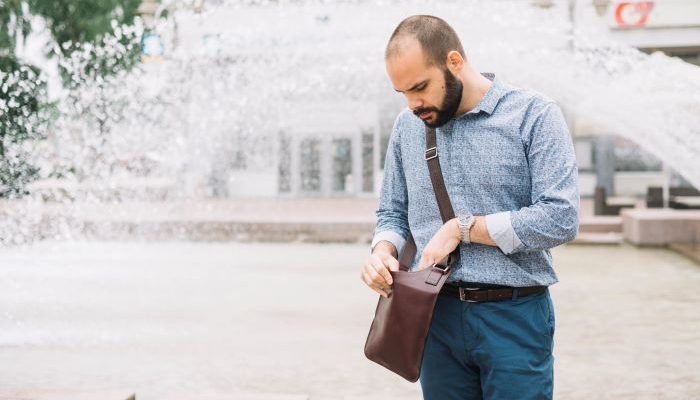
Keeping your iPhone safe sounds simple, but everyday habits—especially how you carry it—play a major role in preventing damage. Many users don’t realize that the iPhone pocket they choose, or the way they place their phone inside it, can affect the device’s long-term durability. From scratches to accidental drops, a lot can go wrong if you’re not intentional about how you store your phone on the go. This guide provides original, in-depth insights and practical tips to help you protect your device and extend its lifespan.
Below, you’ll find 10 expert-level iPhone pocket tips, backed by common-sense analysis, user experience, and mobile safety best practices that go far beyond the usual generic advice.
1. Choose the Right Pocket: Not All Clothing Is Designed for Electronics
It may sound surprising, but the type of clothing you wear can influence how safe your iPhone stays throughout the day. Shallow pockets, loose bottoms, or tight jeans can increase the likelihood of accidental slips or bend pressure. A deep, well-stitched iPhone pocket reduces impact force and keeps your device from falling out while sitting, running, or bending down.
Best practice:
Use pockets with reinforced seams, preferably on cargo pants, jackets, or hoodies. These pockets distribute weight more evenly and minimize device movement.
2. Never Mix Keys or Coins With Your iPhone
One of the most common causes of scratches is pocket friction. Placing your phone alongside keys, coins, hairpins, or even zipper edges can leave permanent marks on the screen or back glass. Even with a protective case, constant rubbing can weaken the coating over time.
Tip:
Designate one iPhone pocket exclusively for your device. Treat it like a separate storage space that should never share items with sharp or metallic objects.
3. Use a Slim but Durable Case for Extra Protection
A case is not just a fashion accessory—it’s your first line of defense. When an iPhone is inside a pocket, the case acts as a cushion against friction, heat, and pressure. Slim cases are ideal because they don’t add bulk, making it easier to slide your device in and out.
Look for cases that offer:
- Anti-scratch coating
- Reinforced corners
- Raised bezels for screen protection
- Smooth outer texture for pocket-friendly movement
Cases made of TPU or hybrid materials strike the perfect balance between style and practicality.
4. Keep Your Screen Protected With a Quality Tempered Glass
Even with the best pocket habits, accidents happen. A high-quality tempered glass screen protector ensures your display remains scratch-free even in tight pockets or during minor impacts. Modern protectors are thin, clear, and extremely durable, so they won’t affect the clarity or touch sensitivity of your device.
Why it matters:
Your iPhone pocket environment constantly exposes the screen to micro-dust and fibers that can cause tiny scratches. A protector absorbs this damage instead of your actual screen.
5. Put Your iPhone in Your Pocket the Right Way (Orientation Matters)
Many people don’t think about how they insert their device—but orientation can make a difference. Placing the screen toward your leg reduces the chances of scratches from external objects or friction from the outer surface of your clothing.
Correct orientation:
- Screen facing your body
- Camera facing outward
This also protects your camera lens from unnecessary pressure.
6. Avoid Back Pockets Unless Absolutely Necessary
Sitting on your device is one of the biggest contributors to bend damage, especially on models with thinner frames. Even though modern iPhones are engineered with hardened aluminum and titanium, back-pocket storage still exposes them to bending and cracks.
Risks of using a back pocket:
- Bending when sitting
- Higher chance of slipping out
- Increased risk of theft
- Pressure on camera lenses
If you must use a back pocket, make sure it’s deep and avoid sitting until the phone is removed.
7. Keep Your Pockets Clean and Free From Dust or Fabric Fiber
Pockets accumulate dust, lint, and tiny debris over time. You may not see these particles, but they can act like sandpaper against your phone’s surface. Cleaning pockets periodically ensures your iPhone pocket remains safe for your device.
How to clean:
- Turn pockets inside out
- Use a lint roller
- Shake out dust every week
- Wash clothing more frequently
This small habit drastically reduces micro-scratching.
8. Use a Pocket Sleeve or Soft Pouch for Extra Protection
If you carry your iPhone in tight jeans or rough clothing, an additional microfiber sleeve can prevent scratches while reducing friction. These sleeves are thin, lightweight, and affordable. They act as a protective barrier between the phone and the pocket fabric.
A soft sleeve also helps when carrying your phone in bags, backpacks, or handbags—where dust and items like chargers or pens can scratch the device.
9. Consider Clothing Designed With Dedicated Phone Pockets
In recent years, more brands have started manufacturing clothing with specialized phone pockets. These pockets often come with padding, depth control, secure flaps, and moisture-resistant materials. They significantly reduce the risk of accidental drops and scratches.
Some jogging pants, gym shorts, and jackets include:
- Zip-lock phone pockets
- Drop-safe stitched compartments
- Heat-resistant inner fabric
- Anti-sweat lining
If you frequently carry your phone outdoors, this upgrade can be a game-changer.
10. Avoid Putting Your Phone in Sweaty or Damp Pockets
Moisture is one of the biggest enemies of electronics. Even with waterproofing, exposing your iPhone to pocket moisture can cause speaker issues, charging port corrosion, screen fogging, and reduced touch sensitivity.
Avoid storing your device in pockets when:
- Exercising
- Walking in hot weather
- Wearing damp or unwashed clothing
Opt for a bag, belt clip, or moisture-protected pocket instead.
Final Thoughts: Make Your Pocket Part of Your Phone Protection Strategy
Your iPhone pocket might seem like a small detail, but it plays a massive role in your device’s safety. With the rising cost of repairs—especially for screens and back glass—protecting your phone from everyday scratches and wear is more important than ever. These 10 tips offer a comprehensive guide based on real-world scenarios, giving you practical ways to protect your device without spending extra money.
By adopting these habits, you’re not only preventing damage but also extending your iPhone’s longevity and preserving its resale value. A little care goes a long way, and proper pocket storage is one of the simplest, smartest ways to keep your device safe.

